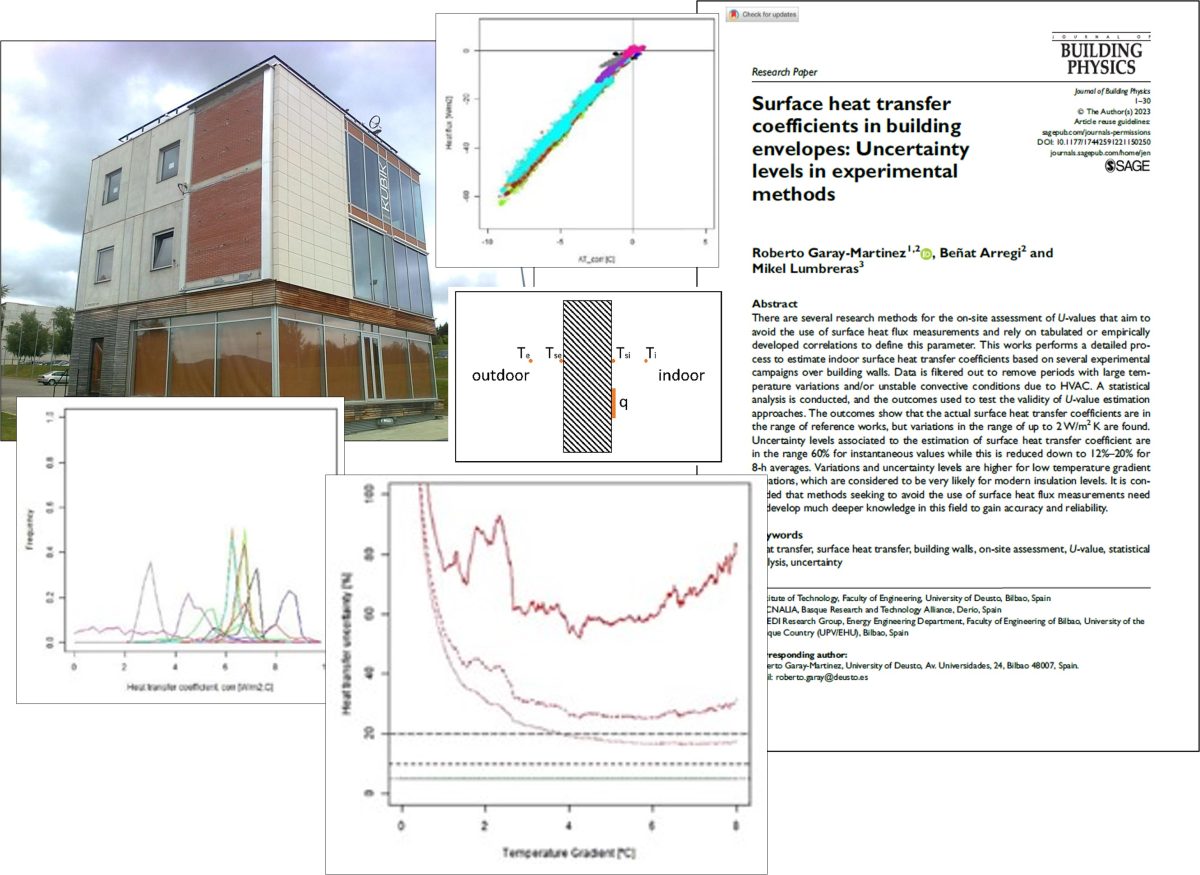One of my research topics is heat transfer in buildings. For more than a decade, I was lucky to perform experimental activities in the KUBIK by Tecnalia test facility. Together with my colleagues, we designed, constructed, and experimented more than 10 setups on a variety of systems. Eventually, this led to my PhD Thesis in 2017.
In 2016, Beñat Arregi joined Tecnalia. He has a very well-balanced profile, with a background in Architecture, extensive experience in hygrothermal analysis and a proactive approach to mathematical formulation, and scientific programming. So, he immediately integrated in the experimental team, and he is developing many heat transfer experiments since then. This will eventually lead to his own PhD in the near future.
So, coffee breaks became a place to discuss about heat transfer. During the outbreak of COVID in 2020, we discussed extensively on surface heat transfer, the origin of tabulated thermal resistance values, and its applicability in our experimental setups.
The question was quite simple: Can we take reference data on surface thermal resistances as a ground truth? On the practical side, this would allow to get rid of the expensive and somehow complex to operate heat flux meters. Some people are working on this topic so that possibilities for non-intrusive (i.e. thermographic) and much cheaper/faster/… performance assessment of building walls are enabled. To do so, the (many) many conflicting sources of thermal resistance values need to be reconciled.
So, as we were not allowed to go outside, we took profit of the COVID lockdown for these issues. We had a decade-long record of experimental data, our computers and plenty of time.
It took some time…Actually more than expected…We engaged Mikel Lumbreras for some help on pattern clustering…It was never easy…But let’s keep the story short.
The outcome was interesting. Overall, there is a linear relationship, where heat transfer is proportional to temperature gradients (This was obvious).
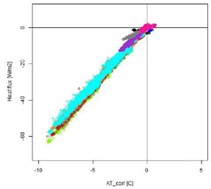
The linearity is most clear for large ambient-surface temperature differences (~>5ºC). The issue is that these large differences were artificially introduced by artificially high indoor temperature levels, but they never occur in real practice. Now the more complex issues, the actual heat transfer coefficient is not the same for all the samples, particularly for real-life applications @ ~1-2ºC of temperature difference.
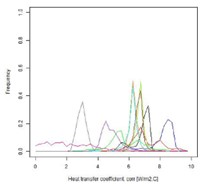
If we look at current and future applications in highly insulated NZEBs, temperature factors >0.9 shall be expected. And this drives the internal surface temperature difference to somewhere below 1ºC. In this context, almost any surface heat transfer is possible.
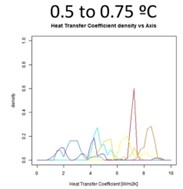
We made some statistics, and propagated the heat flux estimation uncertainty to overall heat transfer measurement. In these processes, the issue typically gets worse. And this was also the case:
- Instantaneous measurements never get uncertainties below 60%
- If measurements are 1h-aggregated, uncertainty goes down to ~30%. ~15-20% if we go further to 8h-aggregation.
But the main issue is that uncertainty skyrockets for those cases with <1ºC temperature difference.
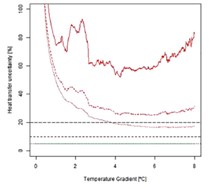
So, what shall we do now? There are several options in front of us:
- Just avoid highly insulated walls. In the performance assessment process, If the heat flux is high, it’s easier for us. But maybe it is not a good solution to waste energy just to make our life easier.
- Keep using heat flux meters. It has some vintage appeal, when compared to fancy infra-red cameras, and you end-up liking them.
- Keep trying for new ways of characterizing surface heat transfer, so that we get better knowledge about this process. We do not have too many clues here, but hopefully someone smarter than us will overperform us. In the end, Science is about this.
To sum-up, we had some fun coffee breaks while discussing about heat transfer, grew slightly smarter on how to perform uncertainty analysis and had our work published. And we are 3 years older now.
For those with interest in the topic, the full paper is available in the following reference: Garay-Martinez R, Arregi B, Lumbreras M. Surface heat transfer coefficients in building envelopes: Uncertainty levels in experimental methods. Journal of Building Physics. 2023;0(0). https://doi.org/10.1177/17442591221150250
